How Warframe’s most ambitious update ever launched a new era of unprecedented conflict
Digital Extremes has Shakespearean aspirations.

This article was originally published in PC Gamer UK January issue 339, which came out December 2019. For more quality articles about all things PC gaming, you can subscribe now in the UK and the US.
Considering the name, it’s odd how little war there is in Warframe. Plenty of blood is shed as players carve their way through procedural corridors and open-world zones, turning mutant soldiers and cyborg super-capitalists into gravy. But the only real, full-scale battle in Warframe’s universe happened centuries ago, an event that looms over the Origin System like an apocalyptic hangover. Until now.
Digital Extremes’ next two updates, called Empyrean and The New War, usher in a new era of chaos and conflict as players unite to repel an all-out invasion by an alien force known as the Sentients. To even the odds, squads will work together to build and pilot a ship in hectic space while also uncovering the truth behind some of Warframe’s biggest unanswered questions.
And at the heart of everything is a personal story of family, betrayal and a Canadian game developer making a weird-as-hell shooter that never stops taking wild risks.
"War doesn’t start and end in a day," Digital Extremes live operations and community director Rebecca Ford tells me. "When we say 'The New War', we mean it. You're going to be living a story in a world where parts of it will be barely recognisable after what the Sentients do to it. Expect the world to change, because that’s what war does."
Dawn of war
That an army of biomachines-turned-intergalactic gods is coming to obliterate Earth won’t be a surprise to any player that’s been following Warframe over the past two years. When it first launched back in 2013, Warframe had no real story or setting to speak of—Digital Extremes was too busy trying to avoid bankruptcy to worry about why the space ninjas were angry. But in the years since, Warframe’s world has blossomed into a vibrant and alien universe.
At the centre of that winding epic is The Lotus, the mysterious woman who first awakens players (called Tenno) and guides them through much of their adventures in the Origin System. Voiced by Ford, The Lotus started as a glorified quest- giver before gradually evolving into Warframe’s most iconic character, a kind of maternal guardian to the Tenno.
The biggest gaming news, reviews and hardware deals
Keep up to date with the most important stories and the best deals, as picked by the PC Gamer team.
That Warframe’s community refers to both Ford and The Lotus as ‘space mom’ is a testament to how deep this relationship has become over the years. In a solar system dominated by mutant super soldiers, greedy capitalists and a monstrous plague, The Lotus was one of the players few allies. Until she wasn’t.
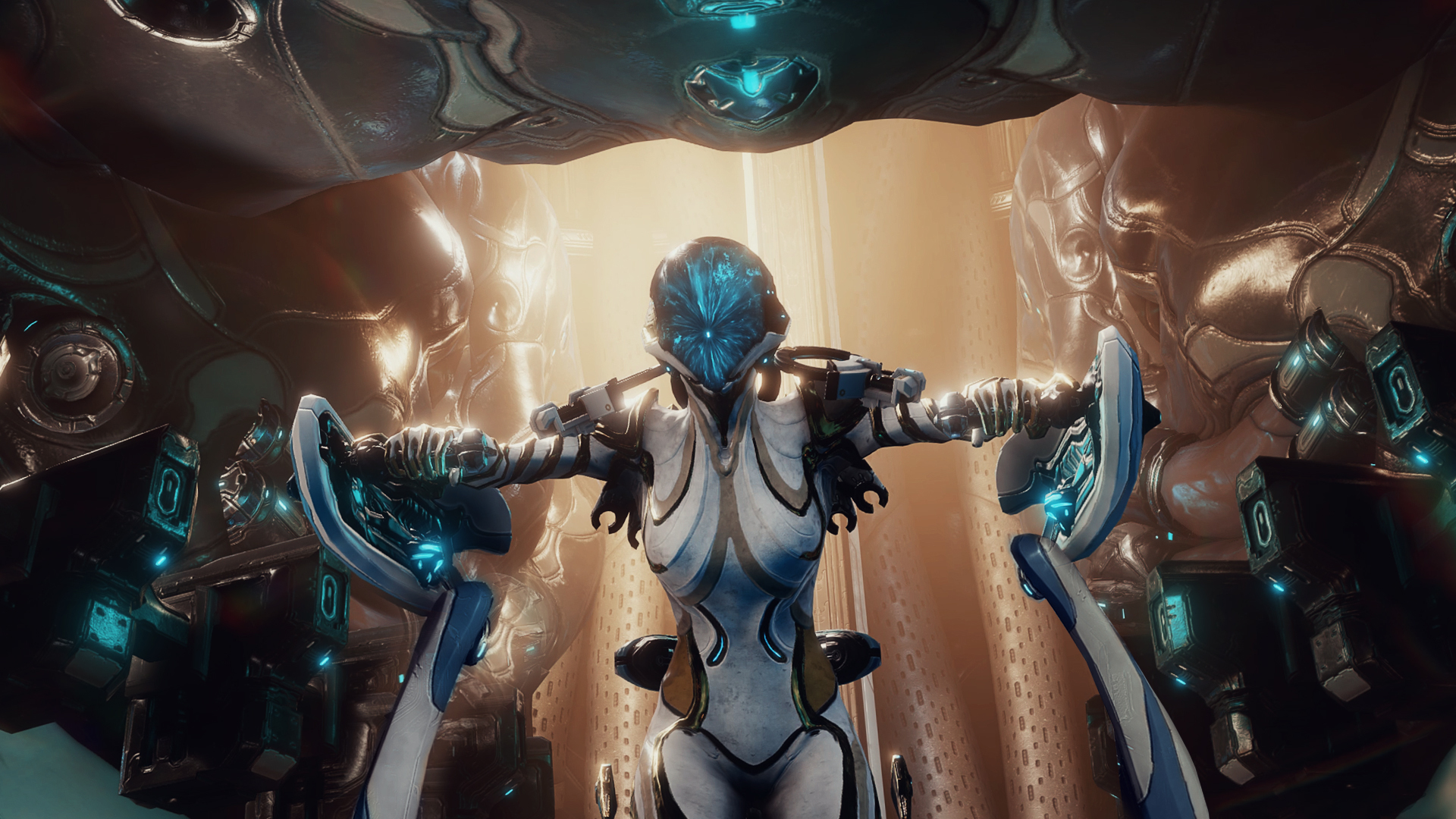
During one of Warframe’s recent quests, Digital Extremes unleashed a devastating twist when it was discovered that The Lotus wasn’t so much a human woman but a biological machine that belonged to a family of sentient terraforming constructs that were fired into deep space to make the nearby Tau system inhabitable centuries ago.
The Sentients soon realised their masters, the creators of the Tenno and warframes, were pretty evil.
So they rebelled.
The conflict that ensued all but destroyed The Origin System and The Lotus (known as Natah) was discovered to be a sleeper agent meant to destroy the Tenno. But she betrayed her family and adopted the Tenno as her children instead.
Now, for reasons we don’t know, Natah has reunited with her family and is helping wage all-out war against the denizens of the Origin System, Tenno included.
"The stakes are colossal," Ford says. "It’s a classic Shakespearean family drama mixed into Warframe. It covers everything from betrayal to parental abandonment. There’s such a complicated formula for what The New War is going to do, and that is rooted in who The Lotus was before she took that name. What was her family history, and what is her goal?"
Apocalypse now
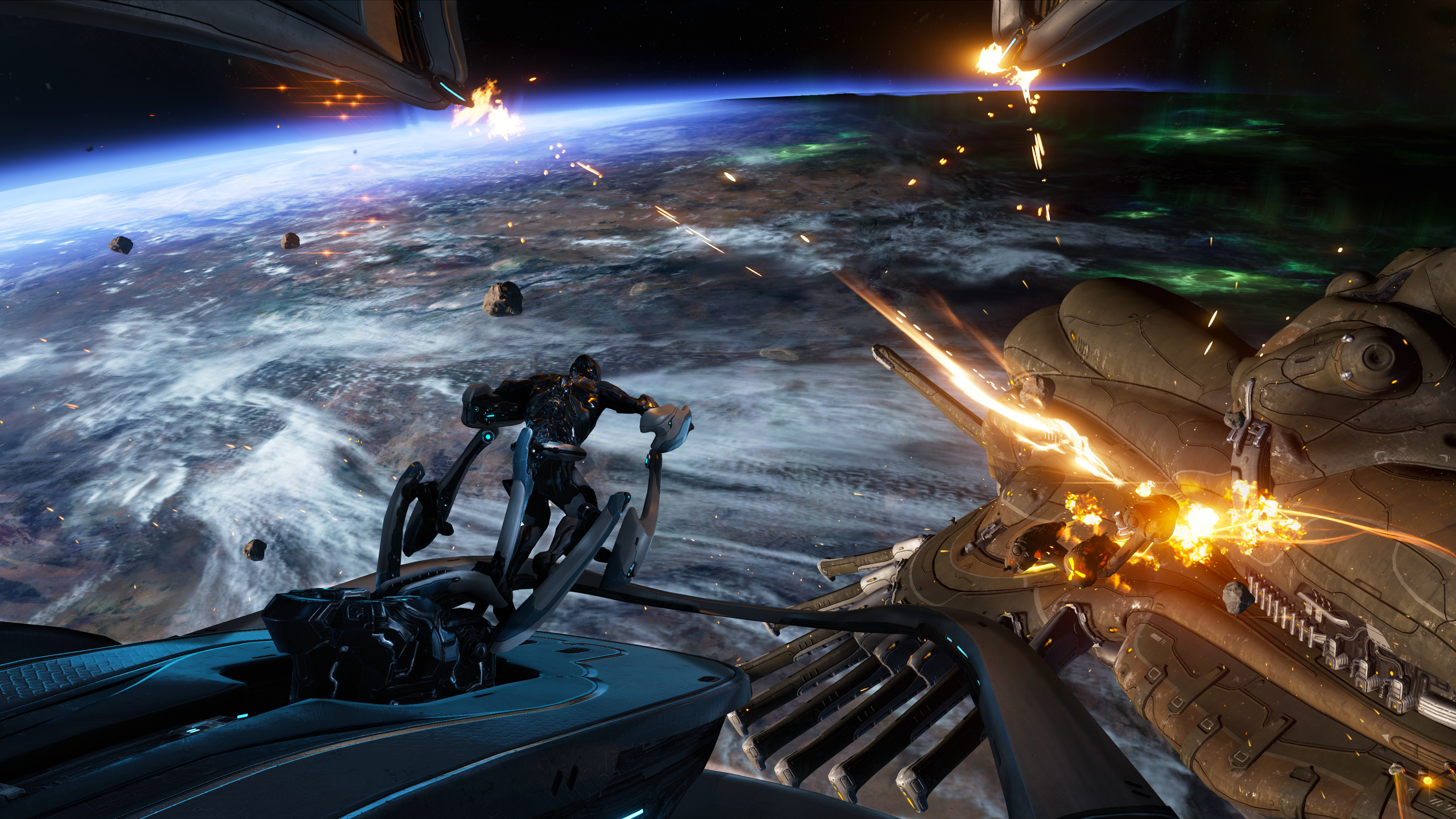
When The New War was first announced, Digital Extremes expected it to take the form of one of Warframe’s 'cinematic quests' that have slowly been added to the shooter over time to flesh out its world and characters. Typically, a cinematic quest can be finished in a few hours or days, but as Digital Extremes chief operating officer Sheldon Carter tells me, the team quickly realised the story they wanted to tell was just too big.
"The way we look at it now is that this entire year we’re launching the war," Carter explains. "It’s not like the way we released Fortuna or the Plains of Eidolon where it’s like, boom, here’s all the content right away. This is us being as much of a 'live game' as we can be where over this next month, you’re going to start building a ship while we give you the backstory behind that, and then we’re going to start launching that first offensive. And as the war progresses—as things get more and more intense—the technology will change and ideas will change. We really want Empyrean to be the start of a whole new way to play Warframe, but also a whole new way of how we’re going to roll out content." The result, Carter hopes, is a story that naturally evolves over time throughout most of 2020, with the stakes getting higher as more is discovered about Natah and her Sentient family. What that actually means is anyone’s guess—and I’m not even sure Digital Extremes has a concrete plan either.
Ford says this is intentional. Digital Extremes wants to buck the trend of live-service games meticulously planning years of content ahead of time using road maps—something that it fell victim to at the start of 2019. "What happens then is you don’t have a surprise and you don’t have a world that feels alive," Ford says. "You have a product that feels like a result of an investor’s meeting 12 months ago. It’s kind of where we are right now.
"But, holy crap, is that not the opposite of what an entertainer wants to do. As entertainers, we want to turn the game up.
"We want the world that players have invested their time into to fight back, to give them something new. And if you have a whiteboard leading that conversation, you have a stakeholder playing your game. But if you have a Tenno, a player in your game that realises that their character is about to embark on a new era of Warframe, that feels a lot better."
The final frontier
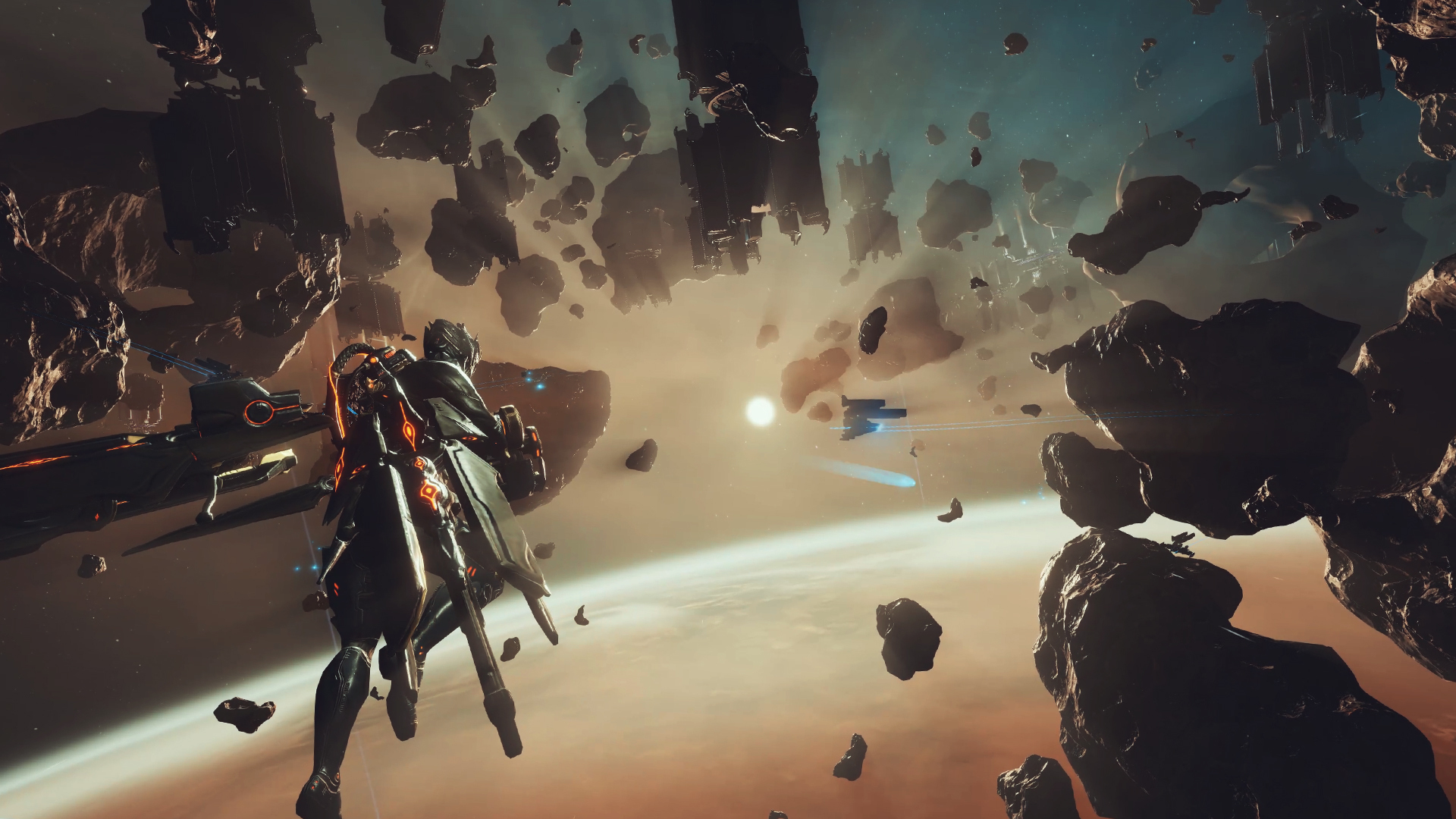
How The New War will end is anyone’s guess, but you can bet that Empyrean’s new ship, called the Railjack, will play a major role. Though the war will be fought on various fronts, Railjack is a brand new mode that is unlike anything else in Warframe to date. It plays something like indie strategy game FTL but in a third-person shooter. You and up to three friends take control of a ship in open space combat, and each person specialises in a certain role like piloting or manning weapon systems. In addition to maintaining the systems aboard the Railjack players can also disembark via their Archwing flight suits and hijack enemy ships or invade installations. These segments play out similar to Warframe’s procedurally generated corridor levels, only there's the added layer of space combat happening around you. For example, while one Tenno is invading an enemy spaceship to sabotage and destroy it from the inside, another might be repelling an enemy boarding party on the Railjack while a third is working to put out fires that have spread on the ship and are disabling key systems.
Players can also disembark via their Archwing flight suits
Things can get even more complicated when you consider options like Squad Link, which lets you request assistance from other squads doing entirely separate missions in Warframe’s universe. If the second squad accepts your request, they’ll receive a dynamically generated secondary objective in their own mission that, when completed, will help the original squad aboard the Railjack.
It’s an update so transformative to Warframe that Carter says the team has had to break it into smaller pieces and stagger the rollout of various features just to manage its scale. "I can’t think of anything we’ve done that’s been as hard as this," he admits. "It’s totally different than anything we’ve done before because there’s a lot of moving parts."
Initially Empyrean was planned as one big release, but now it’s broken into stages. In the past few weeks, players gained access to the Drydock so they could begin the process of building their own Railjack ship. In mid-December, they’ll be able to take it on preliminary skirmishes against the Grineer faction. Going forward into 2020, the Railjack will be one of the few weapons players have against the Sentients in The New War.
Each planet in Warframe has its own unique aesthetic for its maps, and The New War will introduce a new one for The Sentients, Ford tells me. What that means exactly Ford wouldn’t say, but she suggests players will soon go on the offensive, striking at the heart of the Sentient invasion force—an enormous Giger-esque mothership that is, quite literally, Natah’s own mother. "It’s this super gothic, almost Doom-esque, cathedral of Sentient architecture that players will be able to access soon just to start setting the stage for The New War," she says excitedly.
Blood, sweat, and fear
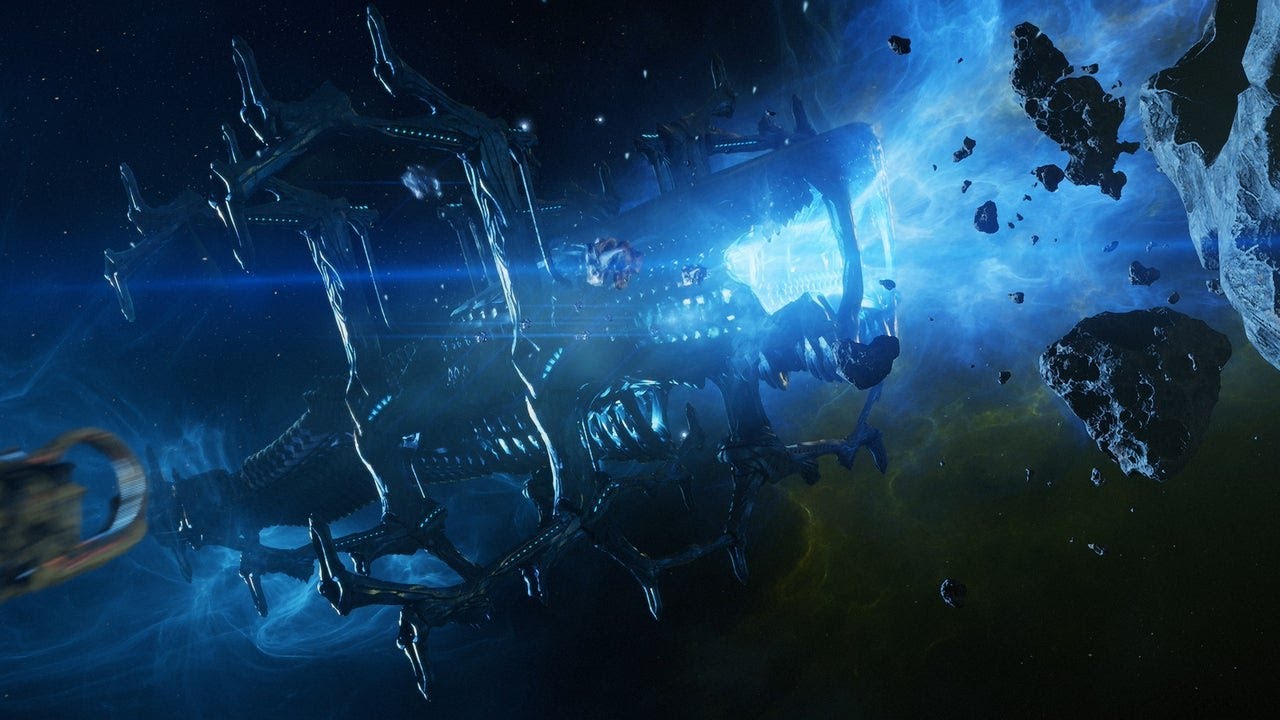
That Warframe is adding co-op ship combat while also launching a months-long narrative arc that could reshape The Origin System as we know it isn’t actually all that surprising. Warframe has been a vessel for Digital Extremes’ crazy ideas since the start. Ford recalls launching surprise attacks on the social hubs orbiting planets, where players can gather or take on special quests. Players had to defend them or risk losing access to them permanently. "Everyone was like, 'What the hell? Did they just destroy a part of the game?’," Ford laughs. "And we totally did."
But Empyrean’s Railjack is special not just because it’s so different to anything else in Warframe. It represents Digital Extremes being able to realise a decade old dream—one that no one but it believed in.
Both Carter and Ford remember those days when Digital Extremes was simply a work-for-hire studio desperate to make its own game. Called Dark Sector, it was supposed to be an innovative MMO-esque shooter about space pirates exploring uncharted space and hijacking enemy ships. But no publisher wanted it. "I remember a publisher came in—I won’t say who it was—but they were just laughing, like, ‘You developers are all insane!’," Sheldon says.
To make Dark Sector more alluring, Digital Extremes stripped out most of its weird sci-fi concepts and developed it as a singleplayer shooter and released it in 2008. But as the years went by and it got harder to stay afloat, Digital Extremes once again returned to its original idea for Dark Sector. Hoping to imitate even a fraction of the success of burgeoning free-to-play games like World of Tanks, Digital Extremes’ last-ditch effort was Warframe.
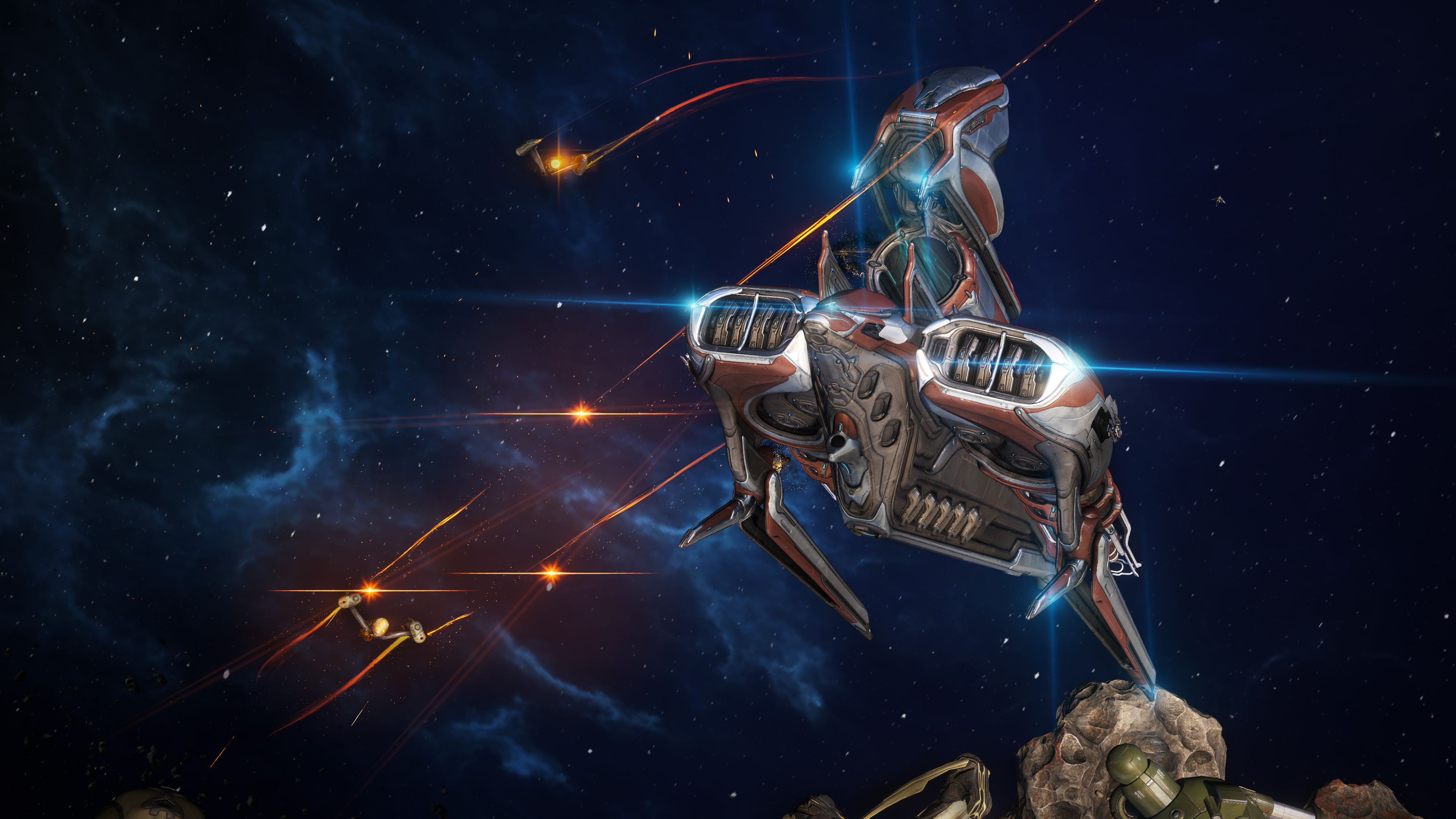
With time and money running out, Digital Extremes had to cut almost every major feature of their original Dark Sector idea just to stay afloat. One of the most ambitious of those lost features was ship-to-ship space combat. "It just wasn’t a game we could make," Ford says. “We didn’t have team size. We didn’t have the foundation to make that game at all.” But even though they didn’t have the resources to make Railjack a reality back then, those unique circumstances became the crucible for Warframe’s enormous success.
Carter says those years as a work-for-hire studio gave Digital Extremes an uncanny ability to prototype and come up with new ideas at a ridiculous pace—exactly what a live-service game would need to keep players interested. “We’re wolves,” Carter adds. "It’s a part of our DNA. Part of the way we work is that we’re scrappy, and we don’t ever want to be satisfied. There’s so many ideas that we had for the original Dark Sector ... and Warframe is this amazing vehicle for us to be able to explore those things and to try them. Obviously, Railjack and Empyrean is one of the biggest ones, but it’s just the start really."
Fight on
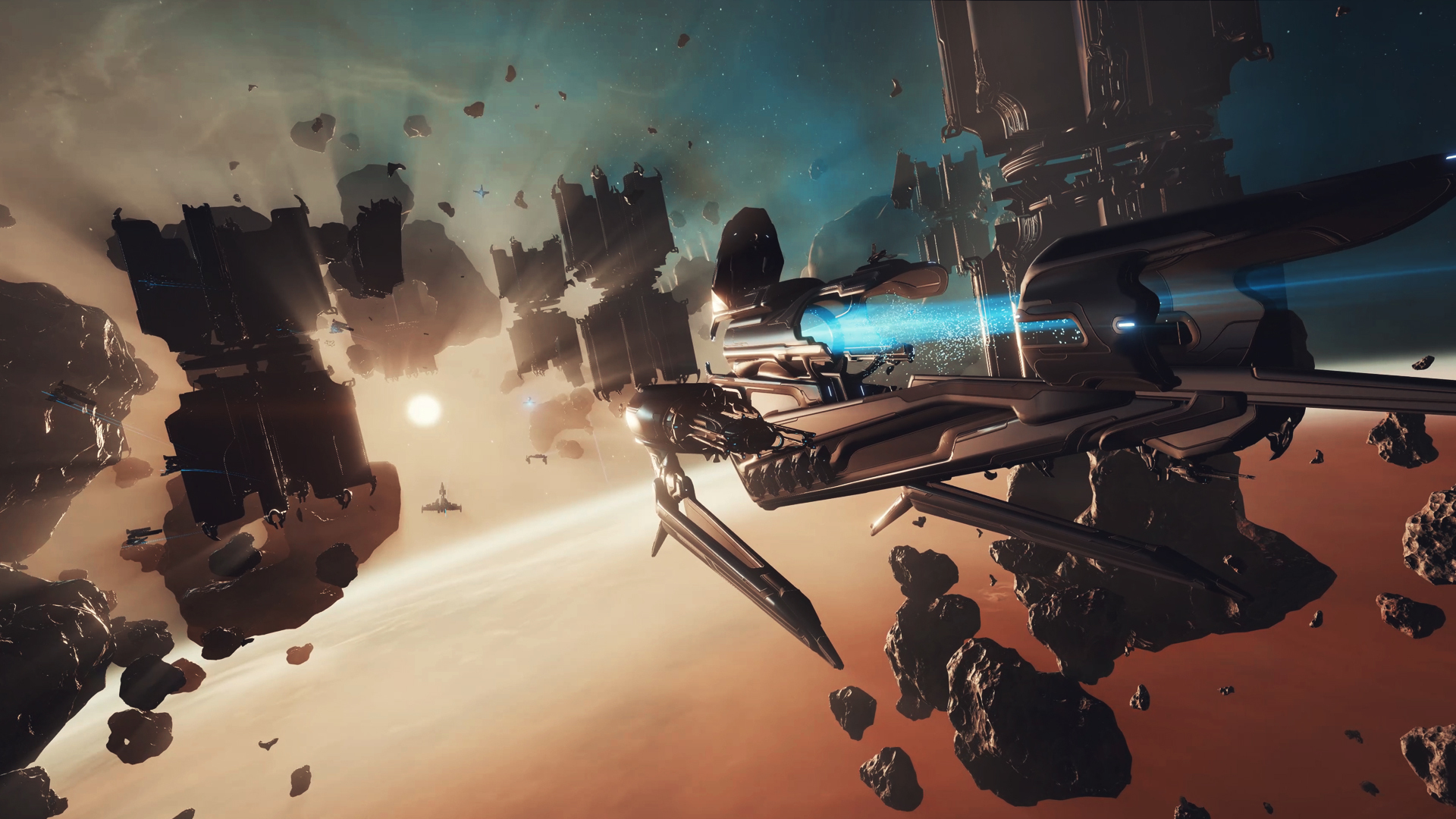
The New War and Empyrean feel like a major turning point for Warframe. The Fortuna and Plains of Eidolon open-world zones certainly made the world feel bigger, but being able to fight in space feels like a new frontier.
Until now, movement through the solar system has been confined by Junctions, a kind of hyperspeed railway that connects Warframe’s planets. But during Emyprean’s initial reveal trailer, Digital Extremes gave players one hell of a wink when, at the end, the Railjack engaged its warp drive and blasted off into the great unknown. It’s hard to not take the implication that one day—maybe in the distant future—players will venture beyond the Origin System to whatever is beyond, but Ford says it’s still undecided.
"I honestly don’t know," she laughs. "I think everyone’s afraid of what saying yes or no would mean to the consequences of the story. But I think for us, having announced the Tau system is where the Sentients fled to for so long, we kind of owe our players at least a glimpse of it."
The fact that the question is even on the table for a game that, just a few years ago was little more than an endless corridor shooter, is remarkable. And as Warframe continues to grow and mutate, Digital Extremes’ vision is keeping pace. “The ambition of Warframe is not to be just a corridor shooter or an open world shooter," Carter tells me. "It’s to be like Star Wars. I’m not saying we’re ever going to hit that. But our ambitions are on that level. We don’t want to make Warframe 2 or 3. We don’t want to make another game. We want this game to be giant, and for the people who love it and play it like this is their main hobby, we want Warframe to be that thing they’re going to love for another ten years."
With over 7 years of experience with in-depth feature reporting, Steven's mission is to chronicle the fascinating ways that games intersect our lives. Whether it's colossal in-game wars in an MMO, or long-haul truckers who turn to games to protect them from the loneliness of the open road, Steven tries to unearth PC gaming's greatest untold stories. His love of PC gaming started extremely early. Without money to spend, he spent an entire day watching the progress bar on a 25mb download of the Heroes of Might and Magic 2 demo that he then played for at least a hundred hours. It was a good demo.


